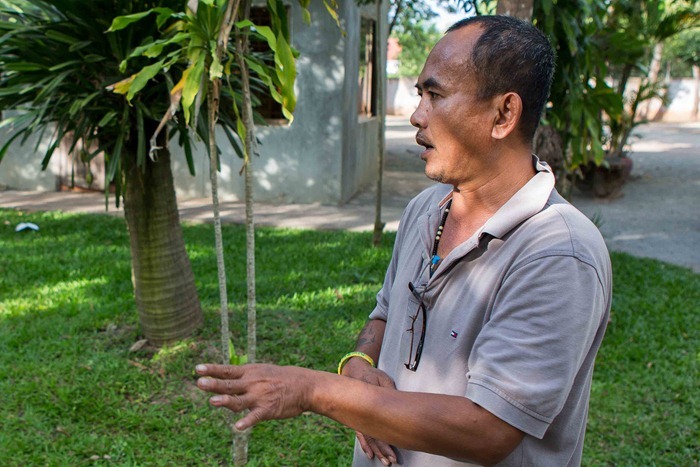(Updated as I accidentally merged two posts)
I am so glad we visited this site. It would have been a huge miss had we not.

I am a big fan of TripAdvisor as it helps you understand what is really available in a city or country – especially if you want to get a little bit off the beaten path. Reading the reviews there were more than a few people who said this is a must see, filled with old Russian and a few American remnants from a terrible period in Cambodia’s history.

Everything is open to explore. Feel free to climb on, in and around them to see these decades old remnants.


Our guide was a war veteran and his tale is heartbreaking – and worth telling here for others to read.
If you have read about Pol Pot and the Khmer reign of terror you will know that millions died. Pol Pot killed anyone with an education and engaged in a mad scheme to return Cambodia to an agrarian lifestyle with the goal of eliminating Cambodia’s dependence on foreign powers who had occupied, pillaged and generally mistreated the country. Entire cities like Siem Reap were emptied and the men were rounded up to serve in the army.
He was such a target. At 14 he was supposed to be taken away to join. His family hid him to keep him from the Khmer army. At a check point he was asked if he was a boy or a girl and he accidentally answered boy. His father, knowing he was caught, began yelling at him for blurting out the wrong thing as the Khmer commander was notified.
His father begged to let his son stay as he was too young which infuriated the ruthless commander. In moments, they shot his father and then shot his mother and two sisters as they tried to collect the fathers body. A few others from their village were also killed when they engaged in the dispute.
At 14 he was taken by the Khmer, just not fathomable. He spent years on the front, escaped into Vietnam and then returned to Cambodia only to step on a land mine and lose his leg.
Abandoned to fend for himself, he was an outcast until an Australian came along and rescued him. They flew him out of the country, got him prosthetics and helped him mentally recover. But as he said, how do you ever recover? Listening to his story, it was just so unfathomable and during the Pol Pot, Khmer reign of terror a sadly common story. No one was left unaffected.
Hearing it first hand is shocking.
 e,
e,
Just hearing that story made the trip to this museum a must see.
Along the wall there are several buildings that house hundreds of weapons, that you can handle. Fascinating to pick up an RPG.





I cannot recommend it enough – a must see.



